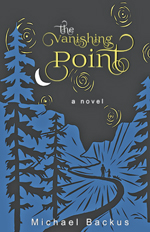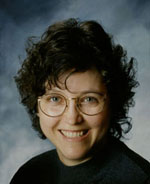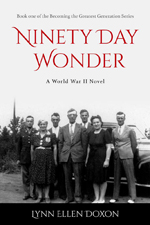Author and creative writing instructor Michael Backus is an essayist, novelist, short story writer and screenwriter as well as a memoirist. His latest release, The Heart Is Meat: An 80s Memoir (Oil on Water Press, August 2024), is a “raw…tender…self-portrait of the artist as a strung-out young meat market worker in the throes of a volatile love affair” and “vividly evokes the carnival seaminess and romance of pre-gentrified downtown New York.” You’ll find Mike on his website MichaelJBackus.com and on Facebook and Twitter. For more about his work, read SWW’s 2017 and 2022 interviews.
 Why did you write The Heart Is Meat and who did you write it for?
Why did you write The Heart Is Meat and who did you write it for?
In my synopsis/pitch for the book, I wrote:
In 1982, NYC’s meatpacking district was a wild confluence of meat market workers, gay men hitting The Mineshaft, NJ mafiosos, veterans of three wars, heroes of the French resistance and Holocaust survivors.
It was a startling new world for a 22-year-old who grew up in a small town in Indiana. I never dreamed of moving to NYC; if my sister hadn’t moved there in 1978, it wouldn’t even have been on my radar. I got a job tossing meat at Adolf Kusy Pork and Provisions through my sister’s boyfriend; it was 1982 and NYC was still an exciting and scary place and the Gansevoort Meatpacking district on the north edge of Greenwich Village was like nothing I’d ever experienced. It was pure chaos from 3:00 to 10:00 am, the streets clogged with hundreds of men in white coats, trucks blowing their horns, semi-trailers wanting to get unloaded and gay men frequenting the Mineshaft and the Anvil, two heavy leather clubs. More than anything, I wanted the book to be a document of that time and that place, a world of drugs, violence, levity, desperation, and hard work. I wanted to recreate the ongoing profanely aggressive dark comedy that was the meat market in general and our meat house in particular. Jimmy, my old boss at Kusy’s, had t-shirts made up that read “Adolf Kusy Pork and Provisions, we have the meat and the motion, the wild and craziest meat house in NYC.” A few years ago, I tracked down Jimmy and he said;
“I wish now I had a tape recorder and had just recorded every day down there. Just the…stories alone, the shit people came up with every day, the insanity of that place.”
If you go to NYC’s meatpacking district today, it seems almost impossible to believe my market of the early 80s ever existed. There’s the new Whitney museum, a seemingly endless number of high-end stores and restaurants, the lovely High Line park built on the old High Line railroad tracks (weedy and abandoned in the 80s). Today, a Van’s shoe superstore sits where Kusy once did. So first and foremost, I wrote the book because working there was a central experience in my life and I wanted to honor that. But I also felt some responsibility to make the book a document of a place and a time that’s so long gone, it’s hard to imagine it ever existed.
When did you know you wanted to write this portion of your life’s story? What prompted the push to begin the project?
I wrote a fiction short story back in the 90s called “Meat” that is loosely based around my experiences in the market in the 80s. It was published in the Portland Review, a literary magazine out of Portland State University and for a long time, I considered that my best short story. At that time, I wasn’t very interested in memoir. I resented its place in our literary culture, the idea that memoir was somehow “more true” than fiction, which is a ridiculous simplification. If I thought about it at all, it was as a possible novel and as a possible novel, I wasn’t interested in imposing an invented plot on what had been my life.
Then life intruded. I got older, people close to me started dying of old age and at some point, it was like someone threw a switch and I found myself writing short memoir pieces which eventually led to beginning the book that would become The Heart is Meat. One thing I learned about memoir is it’s easier to structure your narrative if you simply commit to a chronological approach, the structure takes care of itself and you can concentrate on content. With fiction, structure is never a given and the sheer number of ways you can approach a fiction narrative are daunting. That wasn’t an issue in writing this book and I found that very freeing.
I should also mention that a large part of the book is about maintaining a live-in relationship, living in the East Village of the early 1980s, going to art shows and dance clubs and guerilla art installations on the Hudson River piers. I try to capture what it was like to live in a New York City very different from today; how it could be scary, but it was also lively and exciting.
How is the book structured and why did you choose to put it together that way? How did you decide when to end the memoir?
I structured the book chronologically more or less but I made a couple of decisions about structure. For one, I wanted to start on action, just jump right into the moment so I didn’t detail how I ended up in NYC in the beginning, I started right in the middle of a day at work in the market, a day when my character was expected to apologize to a meat inspector I’d had a run in with a few days before. Adolf Kusy Pork and Provisions carried only boxed meat, so meat inspectors never bothered us, but they could cause problems if they wanted to which was why I was being forced to say “I’m sorry” for something I considered the fault of the inspector. This forms the first 30 pages or so of the book.
After this opening, I mostly moved forward chronologically but about halfway into the book, I have a second structural section where over a five-day period (the overall section is called “The Great Stakeout” and is broken down into sections marked Day One, Day Two…to Day Five) I detail two dramatic events happening at the same time. At work, there had been a holdup and murder in a nearby meat house and Adolf Kusy had the most ready cash on hand (we did more retail business than anyone else in the market) and everyone was sure we would be next. Plainclothes cops spent five days wearing white butcher’s coats and pretending to work among us while waiting for the robbers to strike. At the same time, the mother, father and sister of the woman I lived with were visiting from overseas and staying with us in our cramped East Village apartment. Each of the five days, I navigated work and cops and possible danger from 4:00 am to 2:00 pm, then after, when normally I’d be napping, I hosted her parents, running around the city, doing touristy things. It was a lot going on at the same time, but it ended up being a central structural part of the book.
About the ending, I struggled with it for some time and I still don’t think it’s perfect. If the book is partly about working in the Gansevoort meat market and living in a very different NYC, it’s also about the slow dissolution of a relationship. I used that final breakup as the end of the book, but after I was done, I interviewed my old boss Jimmy and added an Epilogue with information on what happened to some of the characters in the book over the previous 25 years. Jimmy remembered some things differently than I did and I included those memories without changing my own, this memoir being how I remembered my life back then. The epilogue also allowed me to include one of Jimmy’s memories about the market then, which helped me make one last point about the uniqueness of that particular time and place, which worked as the actual ending to the book.
Tell us more about how the book came together.
Writing took a couple of years; I mentioned a fiction short story “Meat” earlier, that story had an aggressive, profane and hopefully comic voice and I was able to find that voice very early on in writing the memoir. That was a huge help. But after multiple rejections, I’d more or less given up on publishing the book. It had some of the best writing I’ve done in my writing career, but it seemed out of step with our literary and social culture; the meat market world in 1982 was often over the top in how people expressed themselves, how they acted (toxic masculinity sums up the market nicely), and while I’m totally on board with our larger culture’s attempts to embrace a more open, inclusive approach to everything, I wasn’t sure my book really fit into the American literary world of today. Oil on Water Press is out of England and I don’t think it’s a coincidence that an English publisher accepted my book. I’m not convinced an American publisher ever would have. In terms of the book cover, the publisher came up with it after I sent them a photo from the 80s of Adolf Kusy’s sign outside the meat house. I liked it from the start and after I was able to get a couple of blurbs from known authors, the cover was complete.
Any “Oh, wow!” moments while doing research for this book?
Nothing so dramatic, but when interviewing my old boss, I discovered that a couple of guys I worked with had died just a few years after I left the job. And he had details that were different from mine. For example, in “The Great Stakeout” section of the book, I remembered the two killers being described as Serbians. He remembered them as Jamaicans, and while I acknowledged that in the Epilogue, I didn’t change anything in the body of the memoir. It seemed useful to acknowledge the reality that memoir is as created a world as fiction; that the moment an event is over, it becomes a memory and all memory is subjective.
One last sad thing; I always imagined finding Jimmy, my old boss, and giving him a signed copy of the book, that he more than anyone would appreciate the details. It was one of the reasons I wanted to get the book published in the first place. But just a couple of months ago, while trying to figure out how to get the book to him, I found out he died in 2023 at the age of 73, which was a surprise since he seemed healthy and robust his whole life.
 Did you ever feel you were revealing too much about yourself while writing The Heart Is Meat? If so, how did you push past this feeling and continue?
Did you ever feel you were revealing too much about yourself while writing The Heart Is Meat? If so, how did you push past this feeling and continue?
Absolutely, I freaked out fairly regularly about it. I published a novel, The Vanishing Point, a couple of years ago and while the main character has a lot of me in him, I could always hide behind the idea that this is fiction and that character is NOT me. But in the memoir, the character literally has my name. It IS me. There’s a genuine vulnerability to that and I can’t claim to have fully come to grips with it, though in the end, it is what it is. In terms of pushing past this fear, when writing, I always tell myself that I need to be as open and honest as possible and if at some future point, someone wants to publish it, then I’ll worry about it then. And I’ve been writing a long time now, I’ve taught creative writing for over 20 years and I’m still teaching it. I’ve long ago come to peace with the notion that I might at times be showing too much of myself, which isn’t the same as saying I never have moments of doubt and worry.
There’s another consideration. The girlfriend who I was living with (Maya in the book) is alive and well. I met her in college, we both ended up in NYC, we lived together for five years on 12th Street and Avenue A. I still know her, mostly in a “like your post on Facebook” way but she didn’t ask to be a character in a former boyfriend’s memoir and I feel some trepidation about that. I have not talked to her about it and part of me has to be selfish and say, “This is my story,” but that doesn’t mean I’m not aware that I’m revealing intimate details about someone who hasn’t been part of my life for 30 plus years.
How did you pick the title of the book?
I worked on the title with my sister and her partner; they came up with the Heart is Meat part, I wanted to add something about what it was so I added An 80s Memoir to the end. I sometimes go back and forth even at this late date on the title, but here’s the thing. When I published my novel The Vanishing Point, I had changed the name a couple of times and The Vanishing Point was the original title and I was eager to return to it. But now in retrospect, I find The Vanishing Point kind of mundane and mostly forgettable. It sounds generic. Whatever else, The Heart is Meat is not generic.
What was it about New York City that first drew you to it? Has your view of the city changed?
My sister moved to the city from Indiana in 1978, she still lives there. I visited her in 79 and while I was not the kind of kid who ever imagined himself living in NYC, something about the vibrancy of the place interested me. It was dirty, it was dangerous, but the streets were also full of people at pretty much any time of the day or night. There were artists and writers everywhere, so in 1982, thinking of myself as a fiction writer, I moved to the city because it seemed the best city for a fiction writer to live in. And it was, pretty much in every way other than doing the work itself. I wrote almost nothing in my time there but much of what I experienced informed everything I eventually did write. I left the city in the late 80s to go to grad school in Chicago but returned in 1998 and spent the next 16 years there and it was a totally different city. Still lively and crowded, but not in any way scary anymore (despite what certain politicians say, NYC is one of the safest cities in the country), I built a fine life around working for a college on the upper east side (both in the administration and teaching creative writing as an adjunct professor), I rode my bike everywhere, I played basketball four times a week at the 92nd street Y. In so many ways, it was an idyllic lifestyle and totally different from my experience in the early 80s. But one of those differences was how expensive it had become and when I lost my apartment in 2014, I literally could not afford to live there anymore. If I could have afforded it, I’d probably still be there.
 KL Wagoner (writing as Cate Macabe) is the author of This New Mountain: a memoir of AJ Jackson, private investigator, repossessor, and grandmother. Kat has a speculative fiction blog at klwagoner.com and writes about memoir at ThisNewMountain.com.
KL Wagoner (writing as Cate Macabe) is the author of This New Mountain: a memoir of AJ Jackson, private investigator, repossessor, and grandmother. Kat has a speculative fiction blog at klwagoner.com and writes about memoir at ThisNewMountain.com.



 Su Lierz writes dark fiction, short story fiction, and personal essays. Her short story “Twelve Days in April,” written under the pen name Laney Payne, appeared in the 2018 SouthWest Writers Sage Anthology. Su was a finalist in the 2017 and 2018 Albuquerque Museum Authors Festival Writing Contest. She lives in Corrales, New Mexico, with her husband Dennis.
Su Lierz writes dark fiction, short story fiction, and personal essays. Her short story “Twelve Days in April,” written under the pen name Laney Payne, appeared in the 2018 SouthWest Writers Sage Anthology. Su was a finalist in the 2017 and 2018 Albuquerque Museum Authors Festival Writing Contest. She lives in Corrales, New Mexico, with her husband Dennis.






 Inspiration can come from numerous sources. I started listening to an audiobook obtained from the library that inspired me to purchase the physical book. Between the two, I devoured the work’s 17 listening hours and 565 pages in three days. Then I felt inspired to write these words.
Inspiration can come from numerous sources. I started listening to an audiobook obtained from the library that inspired me to purchase the physical book. Between the two, I devoured the work’s 17 listening hours and 565 pages in three days. Then I felt inspired to write these words. Sherri Burr’s 27th book,
Sherri Burr’s 27th book, 



